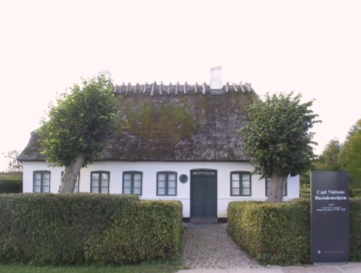


Compared to Swedes and Norwegians, Danes were fewer in number, came to the United States later, dispersed more widely across the country and assimilated more rapidly. In the 1970 United States Census, Danish-born residents of the U.S. and their children numbered 326,000 as compared to 615,000 Nowegians and 806,000 Swedes.
Some factors which influenced emigration from Denmark include:
1. Land policies / Inheritance laws
Danish government land policy prevented the subdivision of farm holdings below the subsistence level. Traditionally the eldest son inherited the farm that was owned by the parents. In the case of a tenant farm, the eldest son would be able to continue the lease agreement with the landlord. Younger siblings had to find work on other farms where hired help was needed. Young women might seek work as maids, especially for non-farming families who could afford to hire help. Young women who emigrated alone or with their families often sought work in the new country as domestic workers.
2. Population growth
Population growth among farming families caused some people to move to urban centers in search of work as a result of a shortage of available land for farming. During years of above-average harvests due in some cases to milder summers, the average size of a family often increased. Successive years with below-average harvests would increase pressure on emigration. Smaller harvests would limit the ability to support a large family. At the same time demand for farm labor would decrease. The first wave of emigrants tended to be farmers with little formal education, training or experience in the skilled trades.
3. Self improvement
Some Danes emigrated with the idea of making a new life for themselves, to send money home to Danish relatives or, in some cases, to eventually return to Denmark once they had earned enough money to obtain a better living situation in Denmark. During the first wave of emigration, some people found the hardships of making a new life proved unfulfilling with insufficient reward. A percentage of immigrants would return to their native country in a pattern of "reverse migration". During successive waves of emigration, many people left home with more training in skilled trades or more education. These later immigrants were more likely to succeed.
4. Military conscription
The defeat of Denmark in the war with Prussia over Sleswig-Holstein had an effect on emigration. Denmark's loss of South Sleswig and Holstein put pressure on Danish citizens who wanted to avoid obligatory military service in the Prussian Army and to avoid suppression of their Danish culture by the Prussian government.
Assimilation was affected by the number of immigrants, date of their arrival, settlement concentrations, participation in ethnic churches, ethnic organizations, historical societies, central archives, and literacy rate.
The Scandinavian Lutheran Churches long remained the central social organizations of their ethnic communities. Danes joined ethnic churches less frequently than did either the Norwegians or the Swedes. Danish Pietists in America believed that to spread the gospel they had to become Americanized and begin to use the English language as quickly as possible.
Ethnic groups who immigrated to the United States in smaller numbers assimilated more quickly. More literate people assimilated more quickly. They often learned English more easily and achieved fluency in less time.
Larger concentrations of a particular ethnic group assimilated more slowly. Ethnic churches and other social organizations sustained the origin culture of the immigrants. Ethnic newspapers printed in the origin language thrived in areas with greater concentrations of shared origin language immigrants.
- Rolf Anderson
January 2022